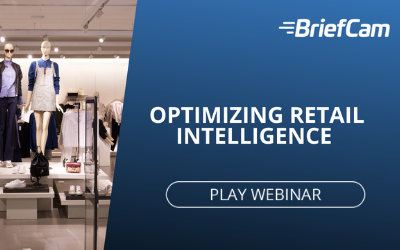How to Reduce Crowding and Control Queues with Video Content Analytics

Improve compliance, customer service, and operations
In various industries, stakeholders have a vested interest in tracking the number of people who pass through their building or store as well as knowing the occupancy of particular parts or areas of a property. Whether for the sake of improving public safety or customer service, management teams usually need to know if there are crowds, lines, or excessive building occupancy in the properties they oversee. Management teams are often required to comply with building occupancy limits to meet health or fire safety regulations that limit the number of people in a location. It is also useful to know and analyze the amount of traffic at a site for setting commercial value. But most commonly, management teams simply want to improve customer satisfaction by reducing crowds and long lines. This is true in a variety of settings, such as retail stores, mass transit stations, and college campuses.
It all comes down to being able to count the number of people in a certain area. Obviously, managers can make anecdotal observations of traffic, but it’s very time-consuming to manually count people – and also prone to inaccuracy and error, particularly in large buildings that have several exits and entrances, and open areas. Some organizations may rely partly on video surveillance systems (CCTV) and remote monitoring to track the number of people in certain areas. However, those cameras are not always optimally positioned for this purpose, and there are seldom enough security staff to manually monitor situations, or business analysts to understand people counts over time and draw conclusions from long-term trend data.
The answer to these challenges is video content analytics software that provides people-counting capability, because it enables managers to track building occupancy counts in real-time and over time and to increase situational awareness to prevent crowding or long queues. Powered by Deep Learning and artificial intelligence (AI) video analytics can detect, extract, and classify all objects in video footage in order to report or “count” the number of people that are in a camera view or have passed through a pre-defined point. Management teams can improve their situational awareness by receiving notifications via real-time alerts for when pre-set thresholds for occupancy or traffic have been exceeded. Furthermore, they can review historical data regarding the number of people who passed through an area over a period of days, weeks, or months.
Reduce crowds and long queues
To make sure that facilities, stores or public areas are not crowded, managers must be aware when the number of people in an area exceeds a specific threshold. Video content analysis systems can be configured to detect pre-defined anomalies based on traffic patterns, norms and benchmarks, and the technology can count people in an area to increase occupancy awareness.

Manage building occupancy
Private companies and public institutions are increasingly required to monitor the number of people in a space to comply with occupancy regulations and ensure public safety. The counts can be aggregated across multiple cameras in a network, so that property managers can know how many people have entered and exited a building in a particular time frame. For example, public schools and college campuses have gymnasiums and auditoriums that seat hundreds of people; security and operations teams benefit by knowing whether those spaces have reached excess capacity. Many retail stores and private businesses also have building occupancy restrictions, especially during the COVID-19 pandemic, to facilitate physical distancing, making the ability to track and alert on occupancy a critical function for everyday operability.
Plan facility maintenance
After a certain number of people have entered a restroom, maintenance managers can receive a real-time alert, then deploy staff to clean the restroom. This can be useful in mass transit centers that serve thousands of people on a daily basis, such as train stations, bus terminals and airport terminals.
Gather long-term people-count data
For each of the above people-counting categories – and others – video analytics operators can create dashboards and reports that make it easier to see patterns and trends over time. This data can be both qualitative and quantitative, providing insights about pedestrian traffic flows. Managers can leverage that data to make data-driven decisions about scheduling staff and/or services. For example, management teams often need to know how many people utilize their facilities; a transit agency may want to know how many people utilize a particular subway stop on an hourly, daily or weekly basis. Similarly, a retail store manager may want to know how many customers entered the store and, of those, what percentage of them entered a dressing room to try on clothing.
People-counting is just one of the many ways that video content analytics software helps management teams track important statistics, whether for marketing, customer service, planning, operations, or physical security. The ability to count the number of people who enter or use a facility or public space gives managers the quantifiable data they need to make better decisions, enabling them to both respond to real-time situations, and conduct strategic planning.
Signup to receive a monthly blog digest.